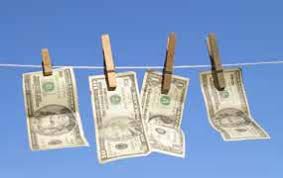By Beverly McAllister
Living green is an omnipresent theme here in Southwest Colorado. Since beginning my Internship at 4CORE, I have discovered that although there are many ways my lifestyle supports a conscious approach to zero waste living, there are always new ideas to employ toward this goal. The summer season offers a variety of opportunities to improve our efficient use of resources.
One obvious change is to use alternative transportation while the weather is cooperative. The
Clean Commute Week, organized by the City of Durango in June, encouraged many alternatives to diminish our reliance on less efficient methods of transportation, and promote cleaner ones. For summertime fun and a healthier lifestyle, participate in zero carbon activities such as utilizing mass transit, walking, biking, and sharing rides. Attend the
3rd Annual Verde Fest in Cortez, CO or the
4 Corners Green Living Expo in Durango, CO for lots of product vendors, sustainability advocates, and fun!
Reducing our footprint by using less electricity can be accomplished a number of ways. To help fund sustainable energy sources you can purchase a Green Power Block from local electric providers La Plata Electric Association and Empire Electric Association.
Our region receives abundant solar energy, and there are tax credits and rebates for adding photovoltaic panels or solar thermal systems to your home or business. This is also a good time to apply for the income-based free
weatherization services
Switching to newer, more energy efficient appliances or adding a
solar shade to your home could be a summer improvement project. To reduce additional wasted heat and power, turn off unnecessary lighting, use the air-dry setting on your dishwasher, set your water heater temperature lower, switch to compact fluorescent bulbs, and utilize power strips to shut down electric power to appliances and electronics when not in use.
In and around your home consider using a “solar powered’ clothes dryer, an old-fashioned clothes line. Xeriscape your yard or use a push mower to cut your grass (and exercise!). If you have a garden or access to the summer’s bounty of fresh foods, try a solar dehydrator as a preservation method.
Build one yourself for almost free.
Recycle and compost your personal waste. Set your thermostats to 78 degrees and run ceiling fans on medium, blowing down in summer, and close shades and drapes during the day to keep the heat out. If you use air-conditioning, have your system checked out by a HVAC technician and remember to clean filters monthly. Evaporative cooling is especially well suited for climates where the air is hot and humidity is low, since it is relatively cheap and requires less energy than many other forms of cooling.
Support the economy by buying locally, and save resources by buying recycled or used items. Shop the flea market, farmer’s market, thrift stores, and yard sales to reuse, recycle, and save money. As an alternative to discarding useful items, donate them, have a sale, or list them on sites such as the
Freecycle.
Pay a visit to the
“Really Really Free Market" at the Riverfront Park on Sundays 1-3 pm, and not only get free stuff but also free food from
“Durango’s Food Not Bombs”.
When dining out, ask if the restaurant uses recyclable food containers for packaging your leftovers. Even if they do not, you can help raise their awareness that their customers feel strongly about this issue. Also, consider bringing your own
containers and
cutlery if they use disposable utensils (available locally at Nature’s Oasis).
After calculating my
carbon footprint (12.47) and interning at 4CORE, I have realized so many more ways to be on a “
carbon diet”. It is my hope that some of these suggestions will be beneficial in your life this summer, help you reduce your energy bills, save you money, and make it so you can grow more green.
 About Beverly McAllister, Intern
About Beverly McAllister, Intern
Beverly has lived in Durango for the last 30 years. Before coming to 4CORE, she worked with the Mercy Medical Center's Gift Shop trying out her innovative ideas on customers. Beverly enjoys going to punk rock concerts and taking time off for fishing vacations. She has become an integral part of the 4CORE team by taking on multiple duties and tasks that are requested of her.
 Not only was Gregg's presentation informative, but entertaining. In concluding the overview of weatherization, Gregg arrived at two true or false questions, which were predominately answered as true from the crowd:
Not only was Gregg's presentation informative, but entertaining. In concluding the overview of weatherization, Gregg arrived at two true or false questions, which were predominately answered as true from the crowd:


























